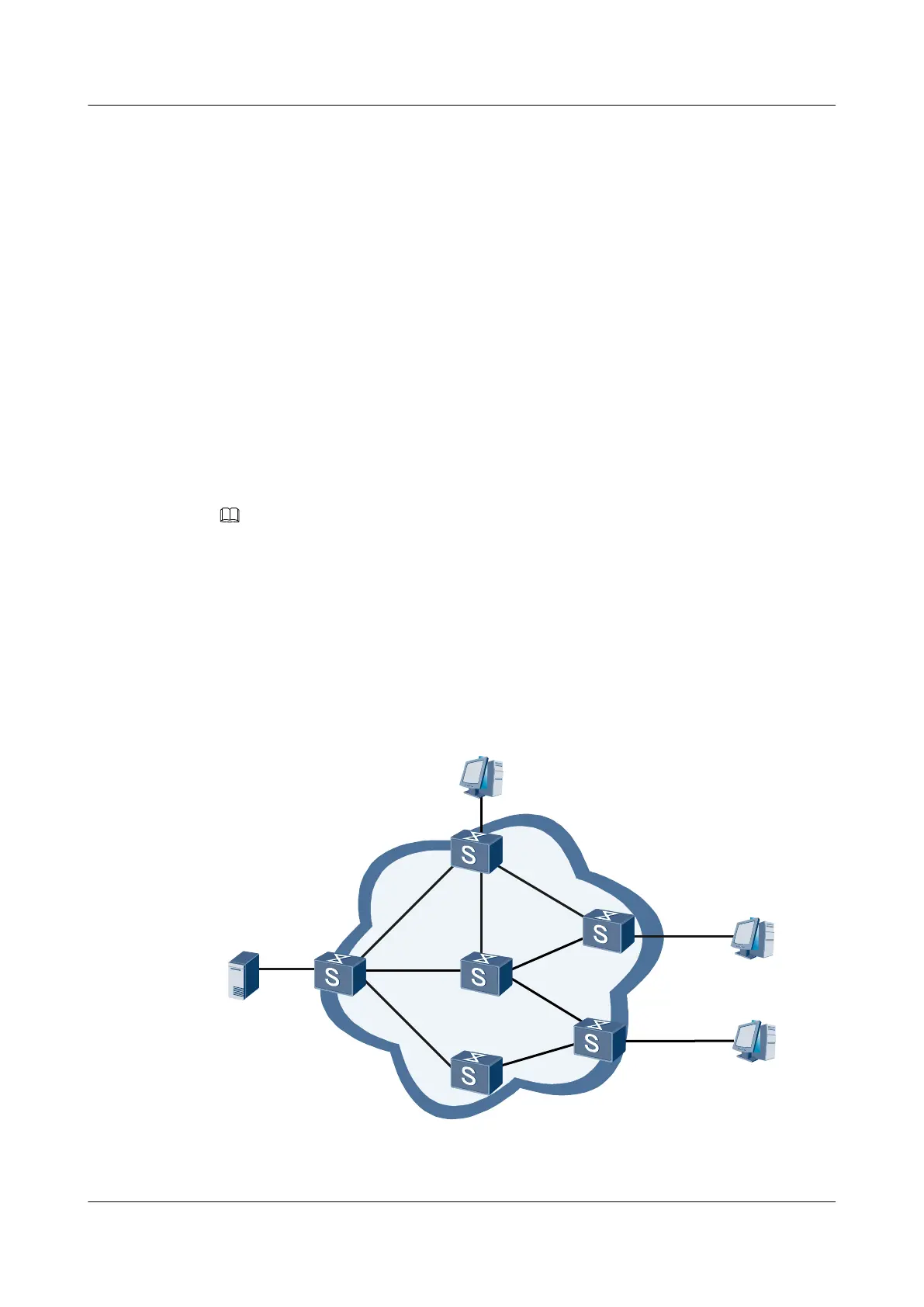6.1 PIM-SM Overview
In a PIM-SM network, group members are sparsely distributed and almost all the network
segments do not have group members resided. Therefore, an RP is a forwarding core of the PIM-
SM network. All PIM devices in the PIM-SM network must know the location of the RP and
the RP collects information about both group members and multicast sources.
The Protocol Independent Multicast (PIM) indicates that any unicast routing protocol, such as
static route, RIP, OSPF, IS-IS, or BGP, can provide the routing information for IP multicast.
multicast routing is independent of unicast routing protocols, except that the unicast routing table
is used to generated multicast routing entries.
PIM forwards multicast packets by using the Reverse Path Forwarding (RPF) mechanism. The
RPF mechanism is used to create the multicast forwarding tree through the existing unicast
routing information. When a multicast packet arrives at a switch, the switch performs the RPF
check on the packet. If the RPF check succeeds, a multicast routing entry is created for
forwarding the multicast packet. If the RPF check fails, the packet is discarded.
NOTE
For details of RPF, refer to the chapter IPv4 Multicast Routing Management.
The working process of the Protocol Independent Multicast-Sparse Mode (PIM-SM) consists
of neighbor discovery, assert, DR election, RP discovery, join, prune, register, and SPT
switchover.
As shown in Figure 6-1, PIM-SM is used in a large-scale network with sparsely distributed
group members.
Figure 6-1 Application of PIM-SM a the multicast network
Source
Multicast
Server
UserB
UserC
Receiver
Receiver
IGMP
IGMP
PIM-SM
PIM-SM
PIM-SM
PIM-SM
PIM-SM
PIM-SM
PIM-SM
IGMP
Receiver
UserA
Quidway S7700 Smart Routing Switch
Configuration Guide - Multicast 6 PIM-SM (IPv4) Configuration
Issue 01 (2011-07-15) Huawei Proprietary and Confidential
Copyright © Huawei Technologies Co., Ltd.
145

